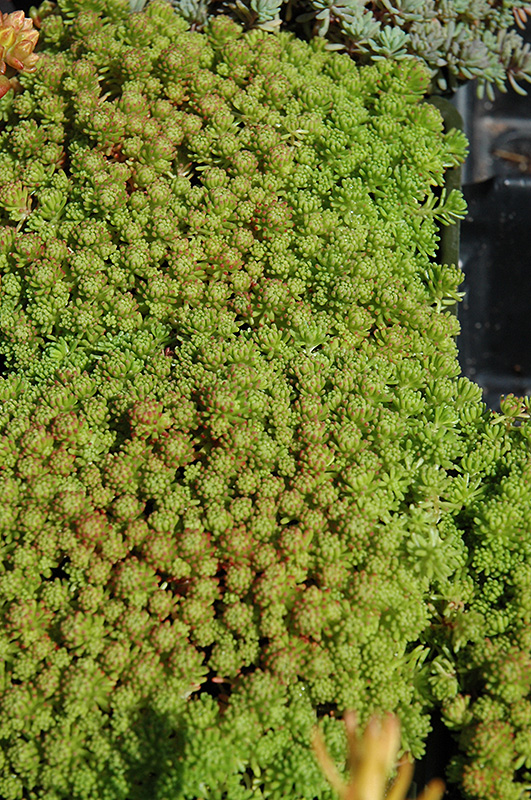Plant Finder
Height: 4 inches
Spacing: 10 inches
Sunlight:
![]()
![]()
Hardiness Zone: 4
Description:
This terrific variety has brilliant, evergreen, gray-green foliage that turns bronze-red in the fall and winter; one of the most colorful of the sedums; its mounded habit is tidy and fast growing; excellent in rock gardens, containers, or as edging
Ornamental Features
Mossy Stonecrop is smothered in stunning white star-shaped flowers at the ends of the stems from early to mid summer. Its attractive tiny succulent needle-like leaves are grayish green in color. The foliage often turns coppery-bronze in fall.
Landscape Attributes
Mossy Stonecrop is a dense herbaceous evergreen perennial with a ground-hugging habit of growth. It brings an extremely fine and delicate texture to the garden composition and should be used to full effect.
This plant will require occasional maintenance and upkeep, and is best cleaned up in early spring before it resumes active growth for the season. Deer don't particularly care for this plant and will usually leave it alone in favor of tastier treats. It has no significant negative characteristics.
Mossy Stonecrop is recommended for the following landscape applications;
- Mass Planting
- Rock/Alpine Gardens
- Border Edging
- General Garden Use
- Groundcover
Planting & Growing
Mossy Stonecrop will grow to be only 4 inches tall at maturity, with a spread of 12 inches. When grown in masses or used as a bedding plant, individual plants should be spaced approximately 10 inches apart. Its foliage tends to remain low and dense right to the ground. It grows at a fast rate, and under ideal conditions can be expected to live for approximately 10 years. As an evegreen perennial, this plant will typically keep its form and foliage year-round.
This plant does best in full sun to partial shade. It prefers dry to average moisture levels with very well-drained soil, and will often die in standing water. It is considered to be drought-tolerant, and thus makes an ideal choice for a low-water garden or xeriscape application. It is not particular as to soil pH, but grows best in poor soils, and is able to handle environmental salt. It is highly tolerant of urban pollution and will even thrive in inner city environments. This species is not originally from North America. It can be propagated by division.
